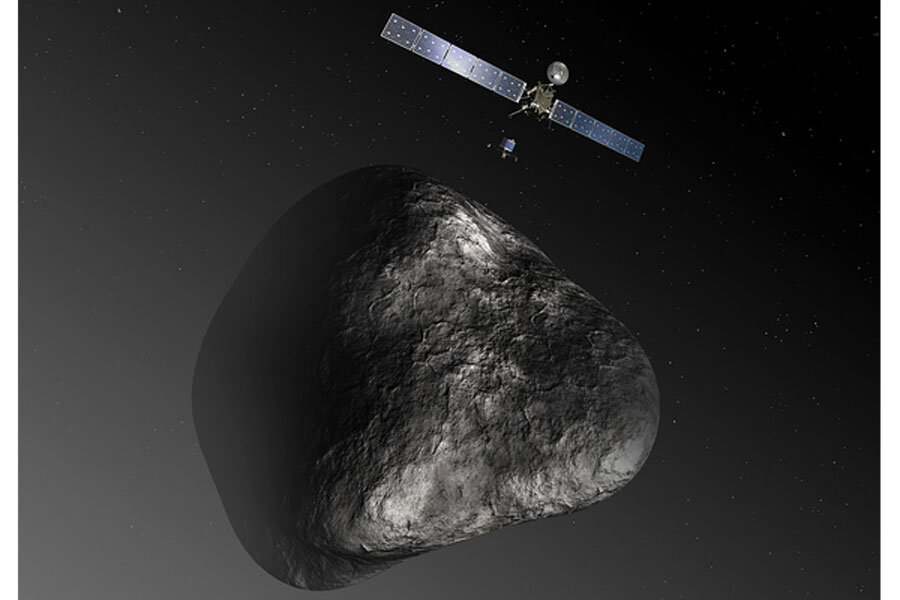Comet-chasing Euro-probe could make history Wednesday
Loading...
After a decade-long trek across the solar system, a European spacecraft named Rosetta is about to do something none of its predecessors have done before: orbit a comet.
On Wednesday, Aug. 6, the European Space Agency's (ESA) Rosetta spaceraft is expected to arrive around the nucleus of comet 67p/Churyumov-Gerasimenko, ending a 4-billion-mile (6.4 billion kilometers) journey. For the mission's controllers, the historic rendezvous will mark the end of a careful, years-long game of catch-up.
Rosetta launched on March 2, 2004, and was steered through several "gravity assists" around Earth and Mars. These loops helped Rosetta speed up to get far beyond the orbit of Jupiter, near comet 67P/Churyumov-Gerasimenko. But since May, the spacecraft has been slowing down.
According to ESA, Rosetta needs to get within just 2.2 mph (1 m/s) the pace of the comet, which is currently traveling at about 34,175 mph (55,000 km/h). To match the pace of its icy destination, Rosetta has been commanded to do several tight maneuvers to slow its speed by 1,739 mph (2800 km/h) by Aug. 6.
A series of controlled thruster burns in May and June alone slowed Rosetta by 1,500 mph (2,400 km/h). ESA controllers conducted those maneuvers on a weekly basis in July and have planned just two more short "insertion burns" for Aug. 3 and Aug. 6 to get Rosetta within 62 miles (100 km) of the comet's surface.
Rosetta is carrying a small lander named Philae designed to touch down on the comet nucleus in November so that it can take samples and conduct experiments. The spacecraft with stay with the comet as it travels around the sun.
Ahead of its arrival, Rosetta has snapped some amazing photos of its comet destination. The most recent images released by ESA show the comet from just 3,400 miles (5,500 kilometers), with a resolution of 330 feet (100 meters) per pixel.
Follow Megan Gannon on Twitter and Google+. Follow us @Spacedotcom, Facebook or Google+. Originally published on Space.com.
- Photos: Europe's Rosetta Comet Mission in Pictures
- Best Close Encounters of the Comet Kind
- How the Rosetta Spacecraft Will Land on a Comet (Infographic)
- Rosetta Probe vs. Comet 'Cherry-Gerry' - Size Comparison | Video
Copyright 2014 SPACE.com, a TechMediaNetwork company. All rights reserved. This material may not be published, broadcast, rewritten or redistributed.





